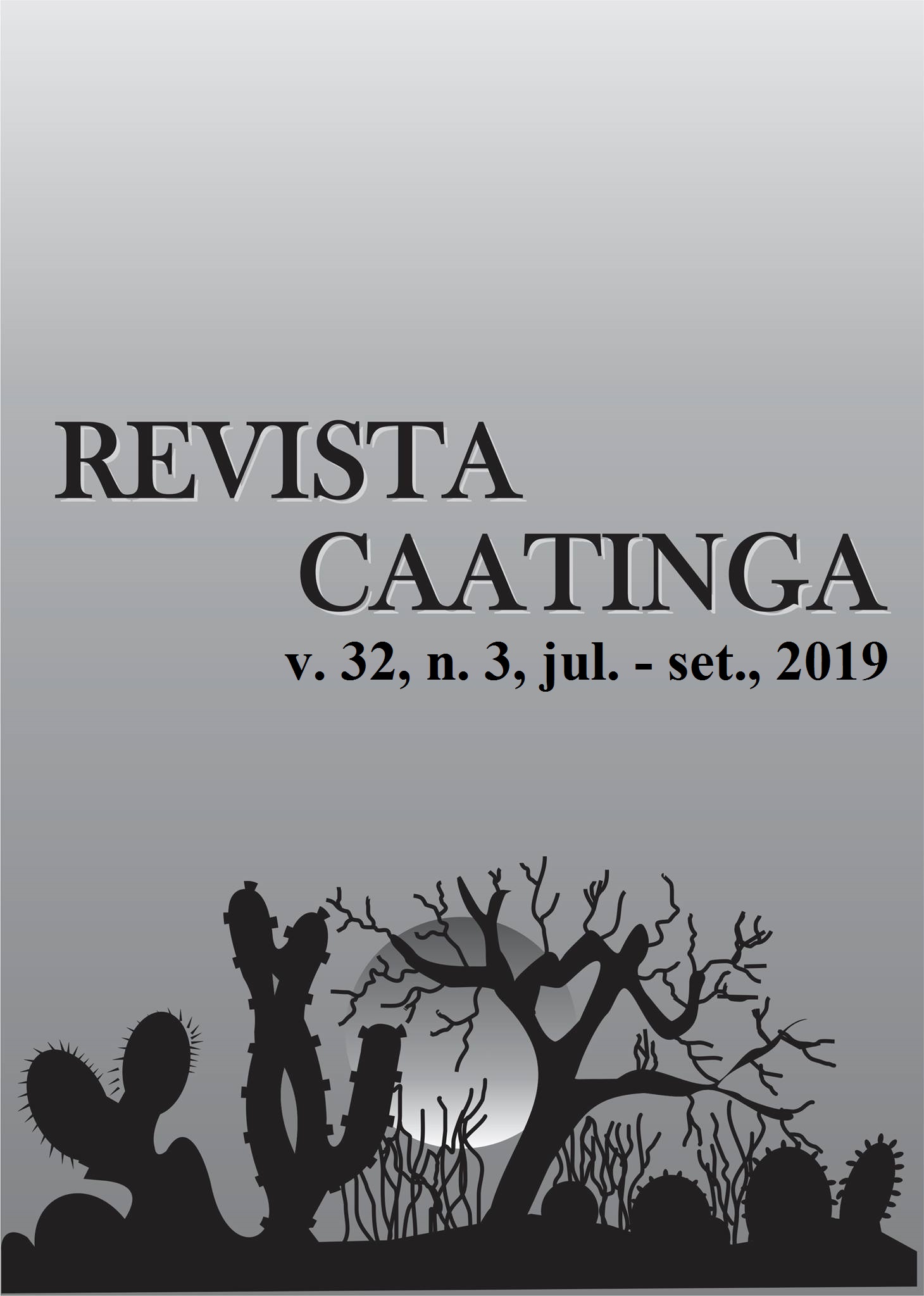PRODUÇÃO DE FORRAGEM E PRESERVAÇÃO DE ESPÉCIES DA CAATINGA ENRIQUECIDA COM GRAMÍNEAS E RALEADA EM FAIXAS
DOI:
https://doi.org/10.1590/1983-21252019v32n326rcPalavras-chave:
Composição botânica. Capim-massai. Capim-búffel. Sombreamento. Pleno sol.Resumo
O objetivo deste estudo foi avaliar o raleamento em faixas e o enriquecimento com gramíneas exóticas em uma área de Caatinga, de modo que fosse possível manter e ou aumentar a biodiversidade de espécies vegetais nativas, e intensificar a produção de biomassa de forragem. Dois estudos foram conduzidos em uma área de Caatinga raleada em faixas e em outra área de Caatinga não manipulada no período chuvoso e transição águas-seca no ano de 2016. Avaliou-se a produção de biomassa herbácea e, a diversidade e equabilidade pelos índices de Shannon-Weaver (H’) e Pielou (J’) das áreas raleada em faixas e não manipulada. Foi ainda avaliado o estabelecimento dos capins massai e búffel ao centro e na lateral da área raleada em faixa. Na época das águas a produção de biomassa herbácea na área raleada em faixas e não manipulada foi de 1.228 kg ha-1 e 833,33 kg ha-1, enquanto o período de transição águas-seca 1.973 kg ha-1 contra 836,00 kg ha-1, respectivamente. Os índices permaneceram próximos H’ (1,86) e J’ (0,74), para a área raleada e H’ (1,77) e J’ (0,85) para a não manipulada. O capim-massai apresentou melhor estabelecimento e desenvolvimento que o capim-búffel no centro e na lateral da área raleada em faixas. O raleamento em faixas aumenta a biodiversidade da área contribuindo juntamente com o enriquecimento no incremento de biomassa de forragem herbácea.
Downloads
Downloads
Publicado
Edição
Seção
Licença
Os Autores que publicam na Revista Caatinga concordam com os seguintes termos:
a) Os Autores mantêm os direitos autorais e concedem à revista o direito de primeira publicação, com o trabalho simultaneamente licenciado sob a Licença Creative Commons do tipo atribuição CC-BY, para todo o conteúdo do periódico, exceto onde estiver identificado, que permite o compartilhamento do trabalho com reconhecimento da autoria e publicação inicial nesta revista, sem fins comerciais.
b) Os Autores têm autorização para distribuição não-exclusiva da versão do trabalho publicada nesta revista (ex.: publicar em repositório institucional ou como capítulo de livro), com reconhecimento de autoria e publicação inicial nesta revista.
c) Os Autores têm permissão e são estimulados a publicar e distribuir seu trabalho online (ex.: em repositórios institucionais ou na sua página pessoal) a qualquer ponto antes ou durante o processo editorial, já que isso pode gerar alterações produtivas, bem como aumentar o impacto e a citação do trabalho publicado (Veja O Efeito do Acesso Livre).







